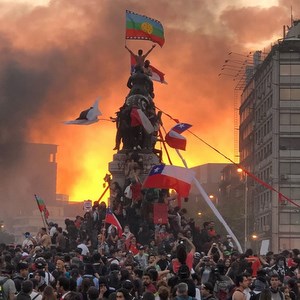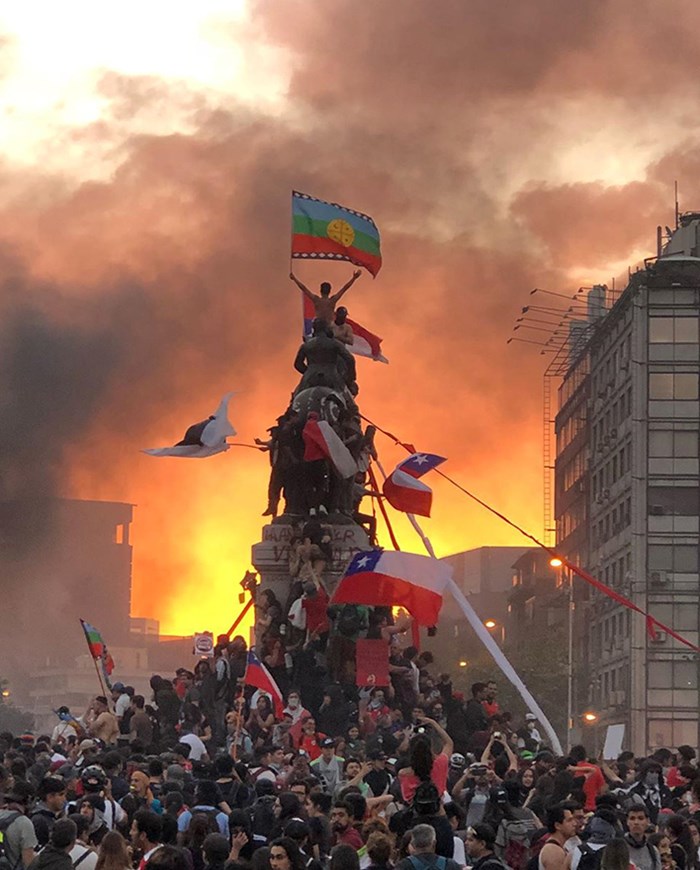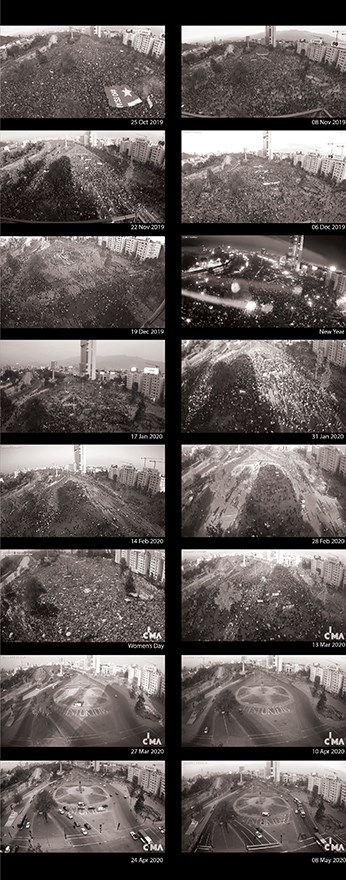Over the past decade, the frequency of mass protests has increased globally. Mobilisations peaked at the end of last year occurring across thirty-seven countries, with mass demonstrations in Venezuela, Colombia, Ecuador, Peru, Chile, Uruguay, Argentina and Bolivia, in South America alone. Who would have thought that a pandemic would silence the voices of millions, significantly changing the global protest scene? Since the beginning of 2020, COVID-19 has spread dramatically around the world, limiting the actions of collective gatherings. Threatened by contagion, almost every country restricts physical presence in public spaces and forces residential confinement. Paradoxically, the public squares and streets that were regularly occupied by social movements suddenly became deserted. Curfews imparted by governments to suppress the protest confrontation now aim to protect public health. Face masks recently criminalised by certain countries are now mandatory.
Social movements and public space are intrinsically related, as mass gatherings need a physical stage to take place. Crowded protests in meaningful city locations have historically proven to be an effective method of democratic dialogue to communicate dissatisfaction, criticise a political order and incite negotiations for change. The recurrence of protests at specific sites is crucial for movements to be broadly recognised, preserving their visibility and engaging with a larger audience. For this reason, the sudden emptiness of these iconic places due to an epidemic could restrict the momentum casting doubt on the continuity of the movement; or provide space for governments to reiterate their power. In COVID-19 times, is social isolation and the ban on mass gatherings in public spaces impacting the political landscape?
Disintegrated protest, subtle discord: the Chilean case
The Carnegie Endowment for International Peace recently published "Polarization and the Pandemic". The research examines the political impact of the coronavirus in ten countries considerably divided before the spread of the virus. It states that most study cases have amplified their polarisation due to the pandemic, except a few, such as Chile, where COVID-19 has "eased political divisions" by relieving the pressure of relentless protests and providing the government with the chance of regaining public trust. Yet, the forced cessation of collective action does not imply that citizen demands have dissipated, much less met. Tensions in Chile persist and may even escalate as a result of the economic impacts of the pandemic. Still, the subdued protest movement is giving a false impression of fading importance by not having a place to perform.
Since last October, Chile presented regular mass mobilisations across the country, with millions of people demonstrating dissatisfaction with social inequality and insufficient government services; in addition to condemning the police repression on mass protests. The situation was somewhat alleviated when politicians agreed on a referendum set to take place in April to vote on the amendment to the constitution. However, the virus postponed the ballot.
Tensions over urban icons
In Santiago, 'Plaza Badequano' -recently popularly renamed 'Plaza de la Dignidad' (The Square of Dignity)- has been the capital's central space of citizen dissent and popular expression. For months, its monuments became prevalent stages covered with flags and phrases of union and accusation. The adjacent installation of wooden totems evoked the indigenous peoples claim for recognition. The Baquedano metro station was destroyed and closed down, vehicle traffic was frequently interrupted, and the tireless protest demonstrations turned the square strips of lawn to dirt
Since the coronavirus outbreak, Plaza de la Dignidad has been uninhabited. The containment effects resulting from quarantine and social distancing strategies extended beyond pandemic control, by giving the government a chance to occupy an iconic protest location that was previously inaccessible to them without the use of force. Already in February, the local council planted groundcover over the busiest surface of the site, a "restoration" that was promptly trampled. In March, on the six-month anniversary of the social movement and hours after declaring ‘State of Catastrophe’ due to COVID-19, symbols of popular appropriation were dismantled: authorities cleaned protest phrases from the monuments, repainted their plinths and removed the indigenous totems. A few days later, the installation of fences around the site blocked its access, without lasting long. Some will argue that cleaning the area was a must. Yet, a blind repair which does not read the content behind the disorder, only emphasises the power struggle over the site and incites the continuation of the conflict. Finally, the President decided to visit the empty square in quarantine to be photographed, generating outrage.
During crisis adaption is essential
Given the impossibility of physical protest, the movements in Chile and other parts of the world have become primarily digital. Notwithstanding, the protest message has continued to be communicated across social networks, albeit lacking the same strength as maintaining a physical presence. The anonymity and group cohesion that characterises a mass protest is lost, the movement size is imperceptible, and the message is restricted to only those who have internet access. Therefore, other nations have reframed the protest under restrictions defining alternative ways of collective reunion within the city. In Tel Aviv's Rabin Square, two thousand citizens gathered to protest maintaining two-meter social distancing between each other, forming a static grid that became viral. Vehicle caravan demonstrations have been a frequent form of mass mobilisation across the United States (carrying out protests that are unrelated to transport itself). Citizens beat pots and pans from their balconies throughout Latin America to show discontent. Still, in certain countries such as Iraq and Lebanon, communities have gathered to protest despite the government's coronavirus restrictions.
During the times of the pandemic, the degree of physical activist presence in the urban realm has been diverse and will continue adjusting to the circumstances. As Vivian Wang co-writes in a recent article from The New York Times, ‘how long the pandemic lasts, and how governments and activists respond, will dictate whether the interruption (of mass protests) represents a fleeting pause, a moment of metamorphosis, or an unceremonious end for some of the most widespread mass mobilizations in recent history’. It can be seen that the inevitable social restrictions resulting from the virus have undermined, even unintentionally, the usual modes of citizen expression. To be aware of these effects and adapt to alternative modes of demonstration, communication and cooperation is crucial for maintaining democratic dialogues, particularly during times of crisis.


